AI is changing the world at a rapid pace, and Andrew Ng, one of the renowned AI experts, shared his views and key trends in the AI industry through a lecture at BUILD 2024 He highlighted the new opportunities emerging from AI agents and agentic reasoning technologies, which are new approaches to developing powerful and cost-effective AI applications.
AI is the electricity of the digital age.
Andrew Ng likens AI to the "electricity of the new era" because it is a useful technology that covers many aspects like electricity in the past. AI is a foundational technology with multiple layers stacked on top of each other, from hardware such as semiconductors to cloud-based infrastructure such as Snowflake and the layers of foundation models that have received a lot of attention lately.

However, what is important and often overlooked is the application layer, which will create value and revenue for the technology below. Therefore, the development of AI applications is the area with the greatest opportunity to create new innovations.
Faster AI Development with Generative AI
A noticeable trend over the past couple of years has been the development of much faster AI models. Generative AI That allows for the creation of applications in a significantly shorter time.
For example, creating a sentiment classifier that is used to check sentiment from texts. Instead of months of data preparation, training models, and implementation. Currently, this can be done in just a few days by writing the right prompt and deploying it immediately.
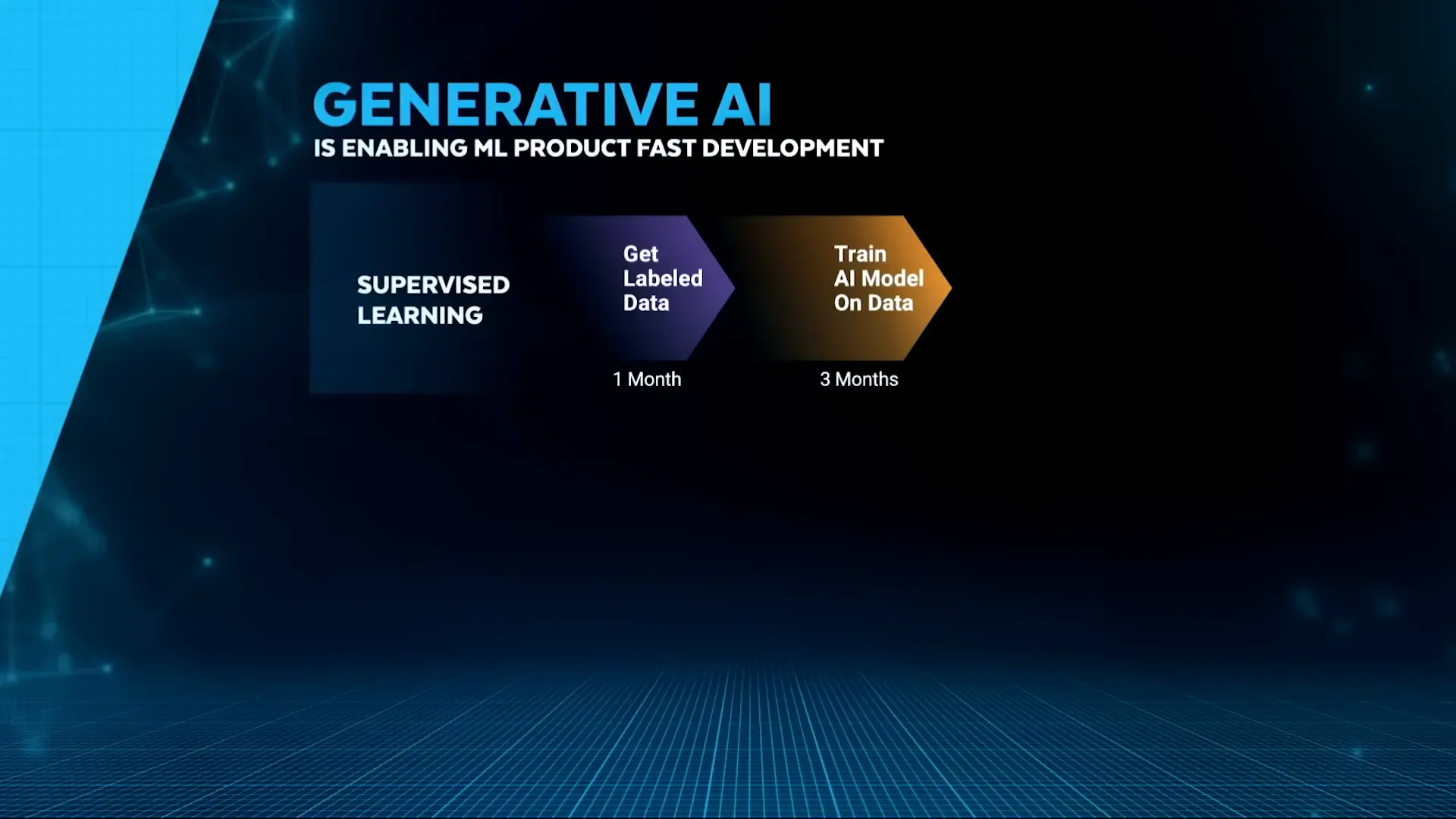
This rapid development gives AI teams the opportunity to experiment with mass prototyping in a short period of time, such as creating 20 prototypes over the weekend and then selecting only the ones that work best. This is a shift in thinking from long-term advance planning to rapid experimentation and improvement.
New Challenges: Evaluation and Application Development
Although model training is much faster, evaluations, also known as evals, have become a major bottleneck because in apps that use large language models (LLMs), sometimes not a lot of training data is needed. But it requires a lot of test data for accuracy and reliability.
Therefore, the process of redevelopment becomes the creation and storage of data in parallel. Instead of following the same order. In addition, there are many stages of application creation, such as product design, integration, and post-deployment care, which are not as fast as AI model development.
The increasing speed of model training is forcing organizations to accelerate the development of other areas as well to enable the effective commercial use of AI.
New Concept: "Move Fast and Be Responsible"
In the past, there was a slogan "Move fast and break things" that emphasized accelerating experimentation even though mistakes may occur, but this slogan was viewed negatively because it caused negative consequences. However, Andrew Ng suggests that the right idea in this era is " Move fast and be responsible "It is a rapid development but must take into account responsibility. Do not release items that may cause damage to the public.
Intelligent AI development teams can quickly and safely prototype, review, and thoroughly test before releasing them into production, which is exciting and dramatically changing the AI industry.
Technologies to watch: Agentic AI Workflows
One of the trends that Andrew Ng is most interested in is " Agentic AI or AI designs that run agents and reasoning processes with multiple steps (agentic workflows), which is different from the use of traditional large language models called "Agents". zero-shot prompting
in zero-shot prompting We simply command the model to answer a question or write content in one go, such as writing an essay from start to finish without editing along the way.
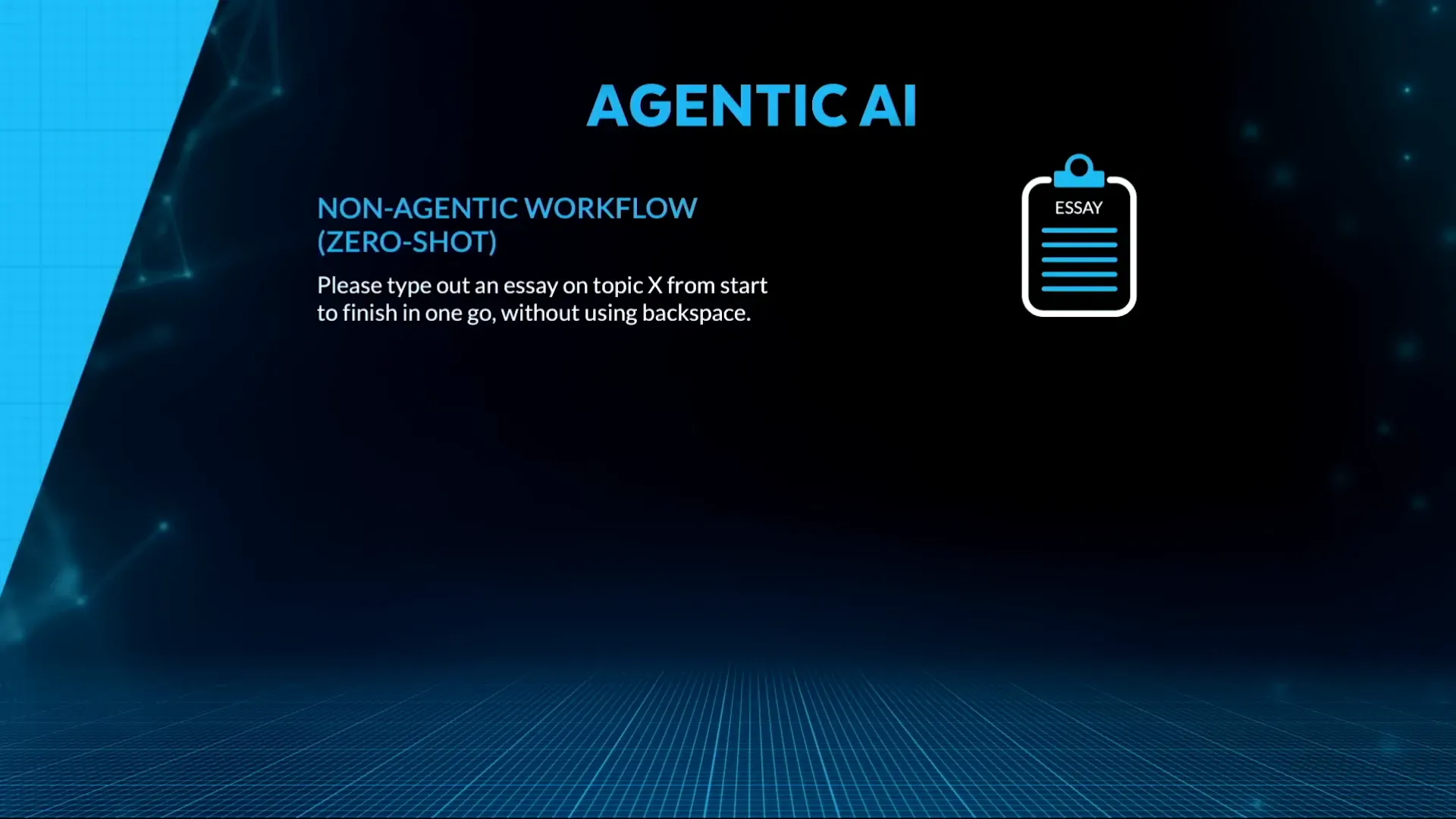
On the other hand, an agentic workflow works in stages, such as starting with a plot sketch, researching more information, revising the original draft, and repeating these steps several times until a higher quality result is achieved.
Examples of agentic AI applications include analyzing complex legal documents. This can greatly improve efficiency and accuracy.
There are 4 main design principles of Agentic Workflows.
- Reflection : Let the model review and criticize its own work, such as writing code and then having the model check for errors and fix it for the better.
- To Use : Let the model decide to run APIs or other functions, such as web search, send email, or manage appointment schedules.
- Planning : Let the model plan a workflow sequence, such as creating an image by separating the steps of detecting gestures first, then creating an image, then describing the image, and finally creating sound effects.
- Multi-Agent Collaboration : Provide models that simulate multiple roles, such as coders and critics, working together to reduce errors and improve the quality of work.
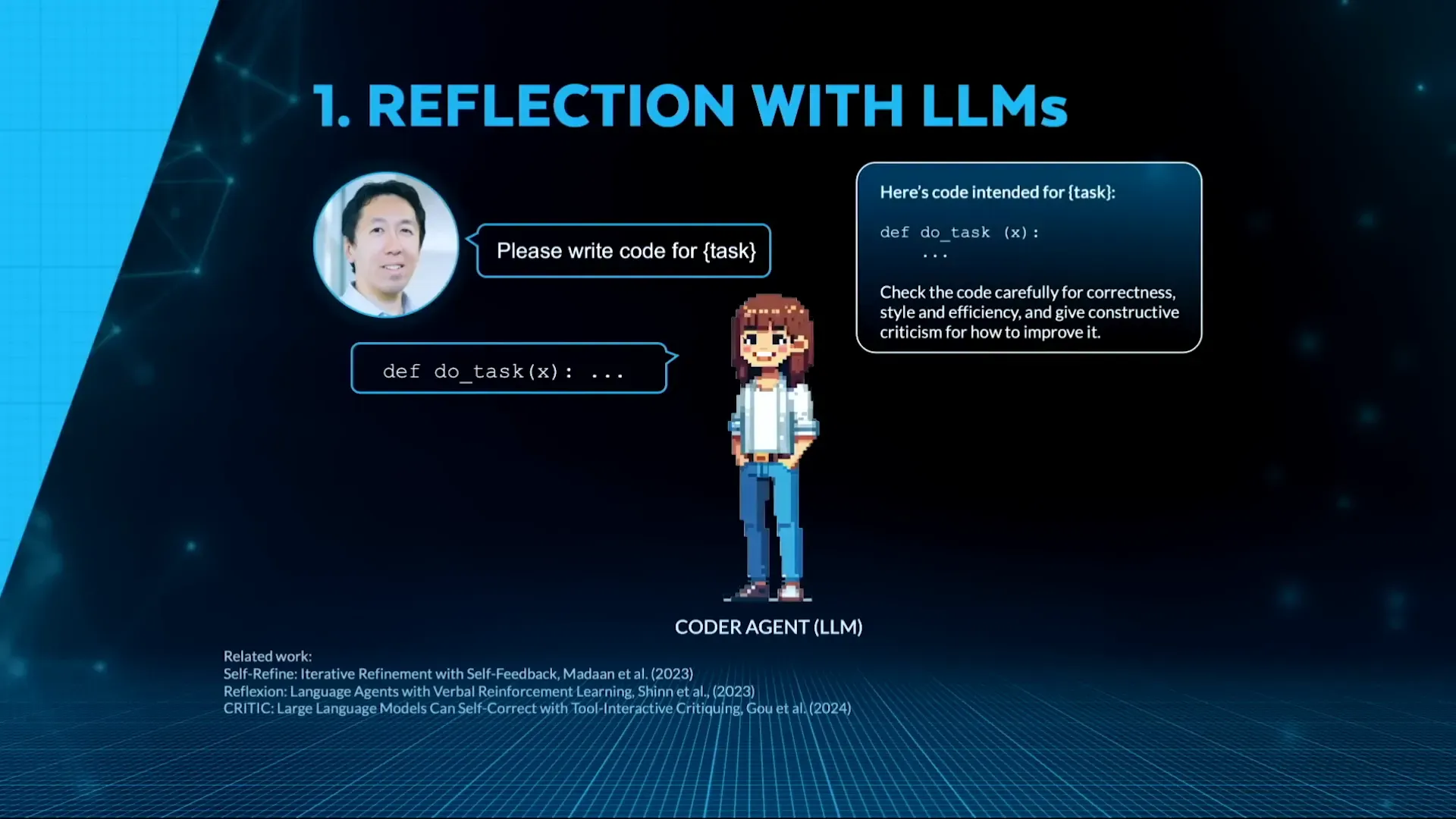
These patterns allow developers to quickly build more complex and more efficient systems.
The Coming of Large Multimodal Models (LMMs) and Visual AI
In addition to the big language model, Developing models that support multiple data formats, such as images, video, and audio, also known as Large Multimodal Models (LMMs) It is a trend to watch.
These models can better process visual and video data when using agentic workflows, such as counting players on a soccer field from photos, or extracting video clips of milestones, such as scoring a goal in a soccer game.

A demo example demonstrated by Andrew Ng and the Landing AI team is the use of a vision agent to automatically write image and video analysis code, making it easier for companies with large amounts of image and video data to put that data to use.

It is also possible to create metadata from videos, such as dividing clips into short bursts, with narration and data in tabular format for further search and analysis.
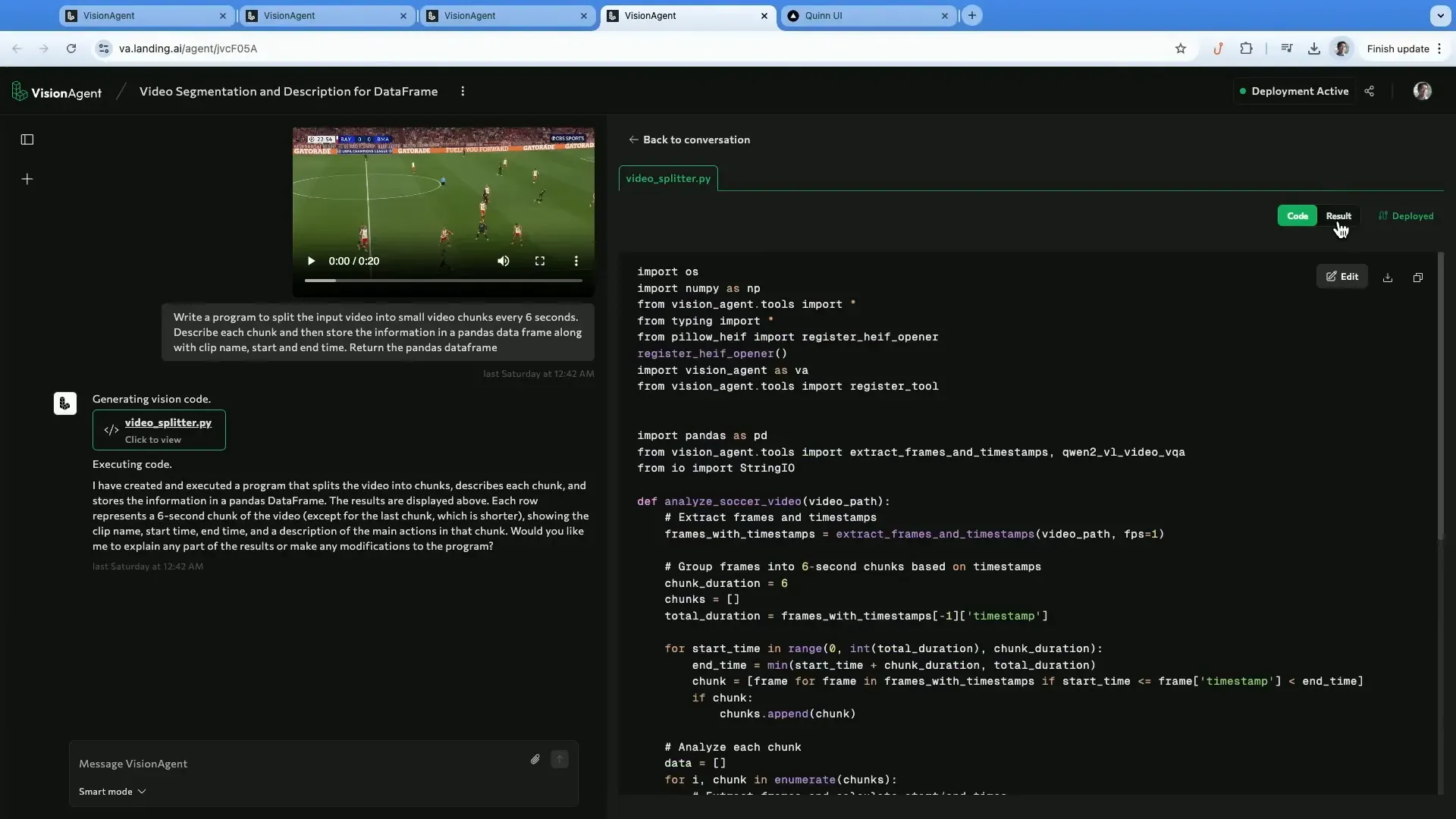
Benefits and Opportunities of Agentic AI in Business
With the capabilities of agentic AI and visual AI, businesses with unstructured data such as text, images, and videos can create more value.
For example, searching for video clips with specific events. Tracking objects in videos, or analyzing images in different environments was previously difficult and time-consuming.
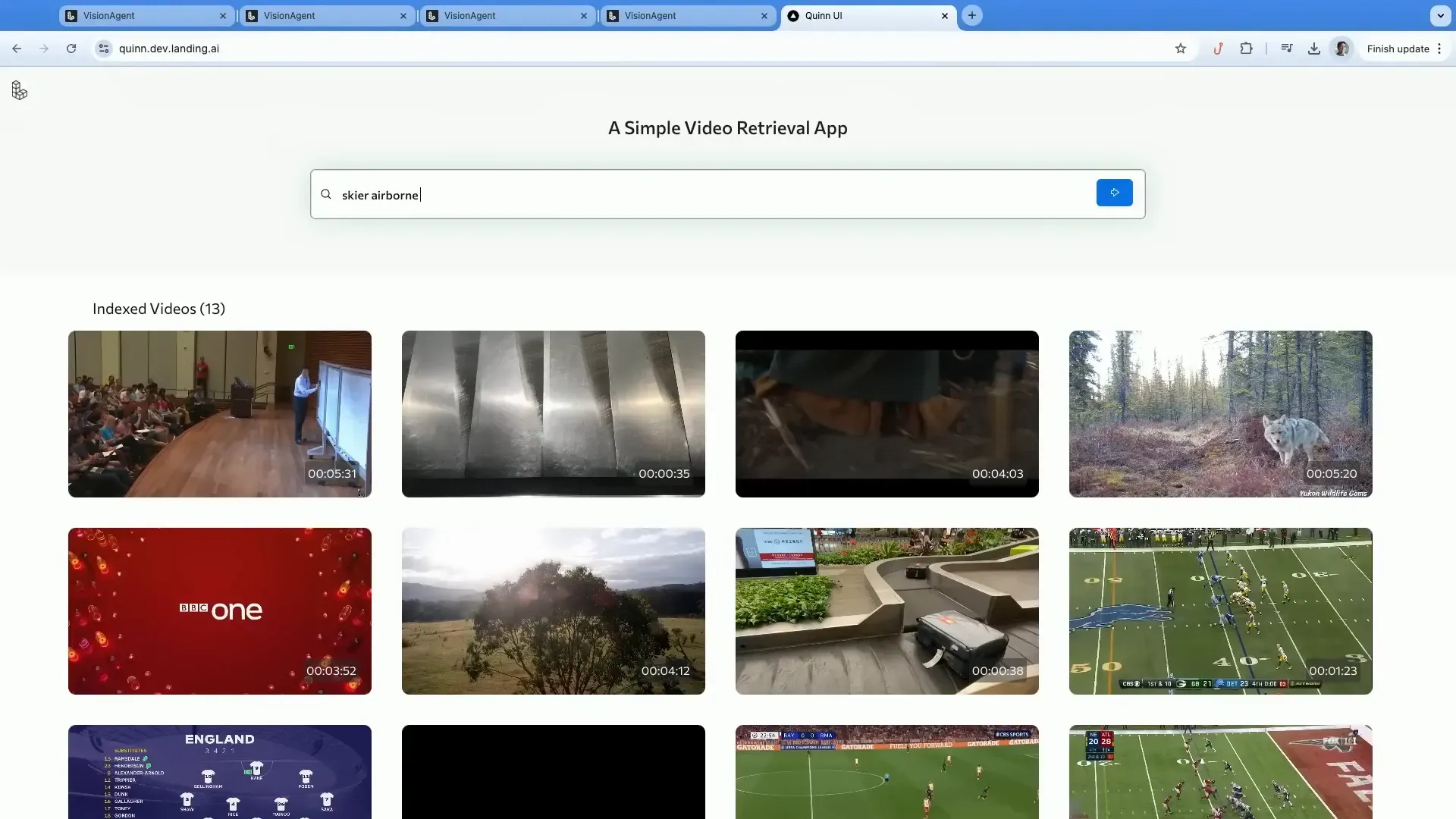
In addition, it is much easier and faster to create these applications. This allows small teams to innovate without high investment.
An overview of key trends in AI to keep an eye out for
Andrew Ng outlines four key trends that are driving AI forward:
- Token Creation Acceleration Because agentic workflows have to read and generate a lot of text. This led to the development of hardware and software technologies to increase efficiency.
- Large language models trained for production (to use) More than answering a general question, such as Anthropic, which launched a model that supports the use of real computers.
- The Importance of Data Engineering with Unstructured Data For example, text, images, and videos are increasing in volume and must be managed effectively to create value.
- The image processing revolution is coming. Although text processing is already widespread, image processing is entering its infancy and will create many new opportunities.
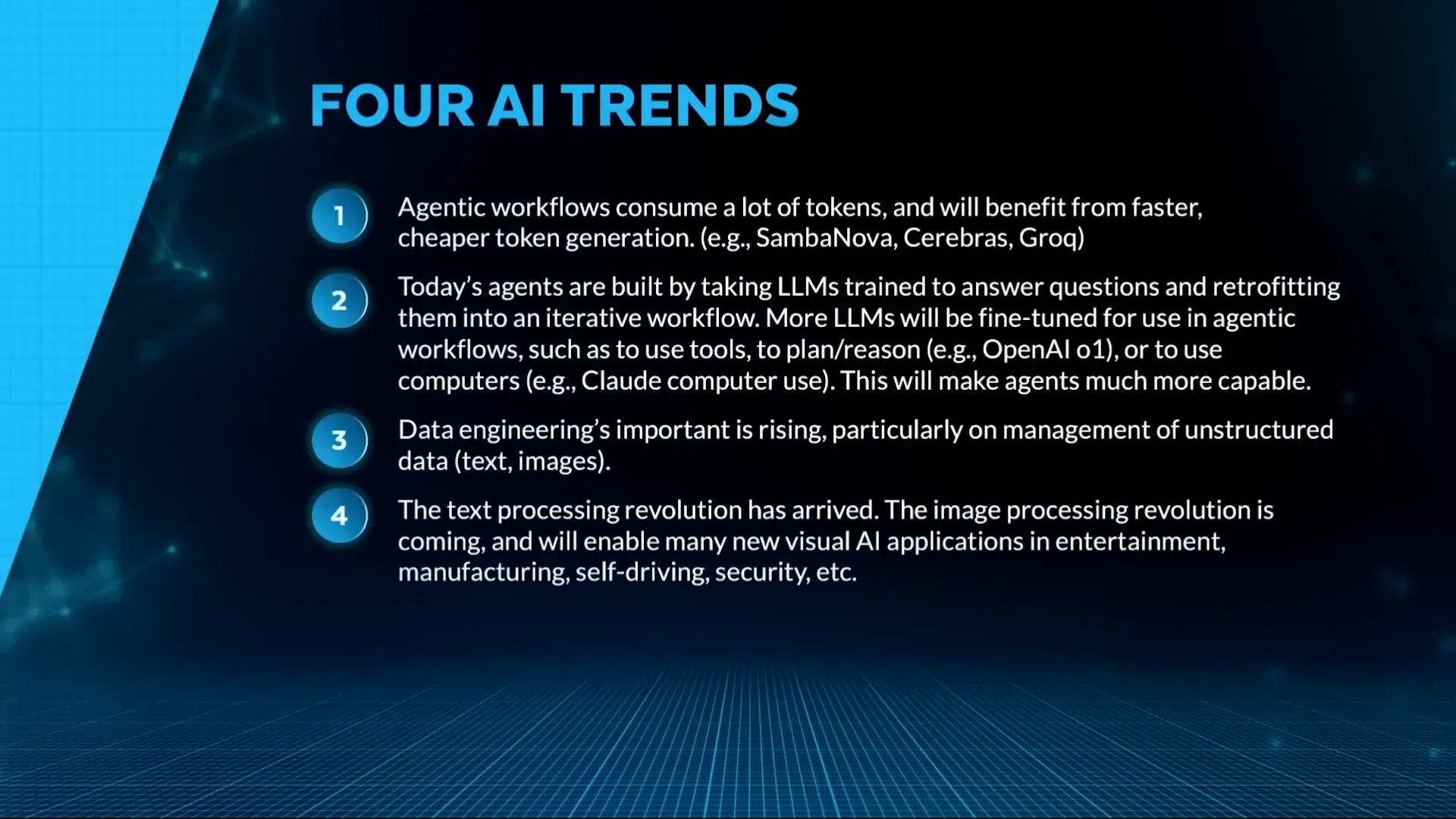
Conclusion from Insiderly
This is a golden opportunity for AI developers to experiment and innovate faster than ever before, with generative AI that reduces development time and agentic AI that expands the scope of model capabilities to be more complex and flexible. The emergence of Large Multimodal Models has made it possible for us to manage image and video data more efficiently.
Developing agentic workflows not only improves the quality of AI work, but also transforms the way of thinking about system design into a process that is continuously planned, analyzed, and improved, which is the key to success in the rapidly changing AI world.
last Unstructured data management and the creation of fast, responsible applications will become the core of organizations looking to use AI to create real value and transform businesses.
For those who are interested in experimenting. visual AI demos Created by Andrew Ng and the Landing AI team. You can visit va.landing.ai to try it out and see code samples right away.
Technical terms you should know
- Agentic AI: AI that works like a rep There are many steps to plan and make decisions instead of answering questions at once.
- Zero-shot prompting: Let the AI model answer questions or do tasks without additional training.
- Foundation models: Large fundamental models such as GPT or BERT are used as a base for the development of AI applications.
- Large Multimodal Models (LMMs): AI models that support multiple data formats, such as text, images, videos, in the same model.
- Evaluation (evals): Testing and evaluating AI models to verify their performance and accuracy
- Data engineering: Data management and preparation are suitable for AI applications, especially unstructured data.


